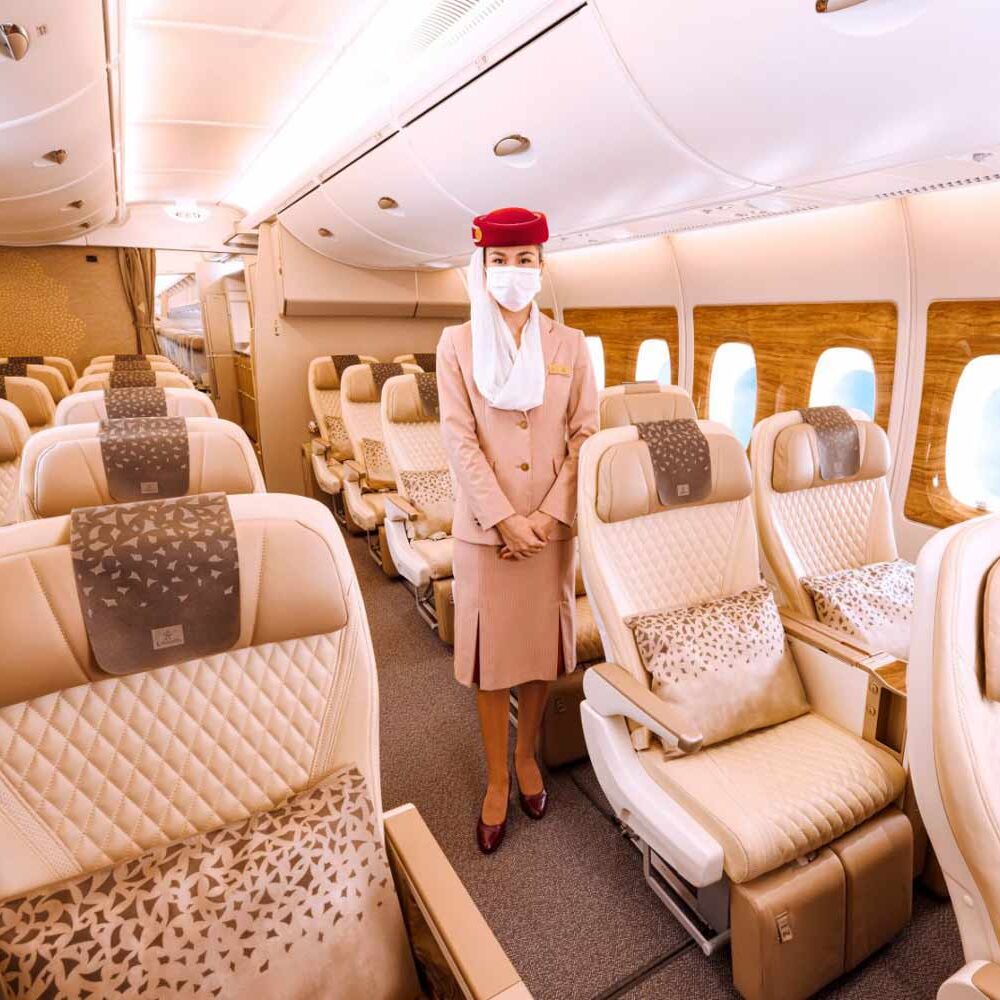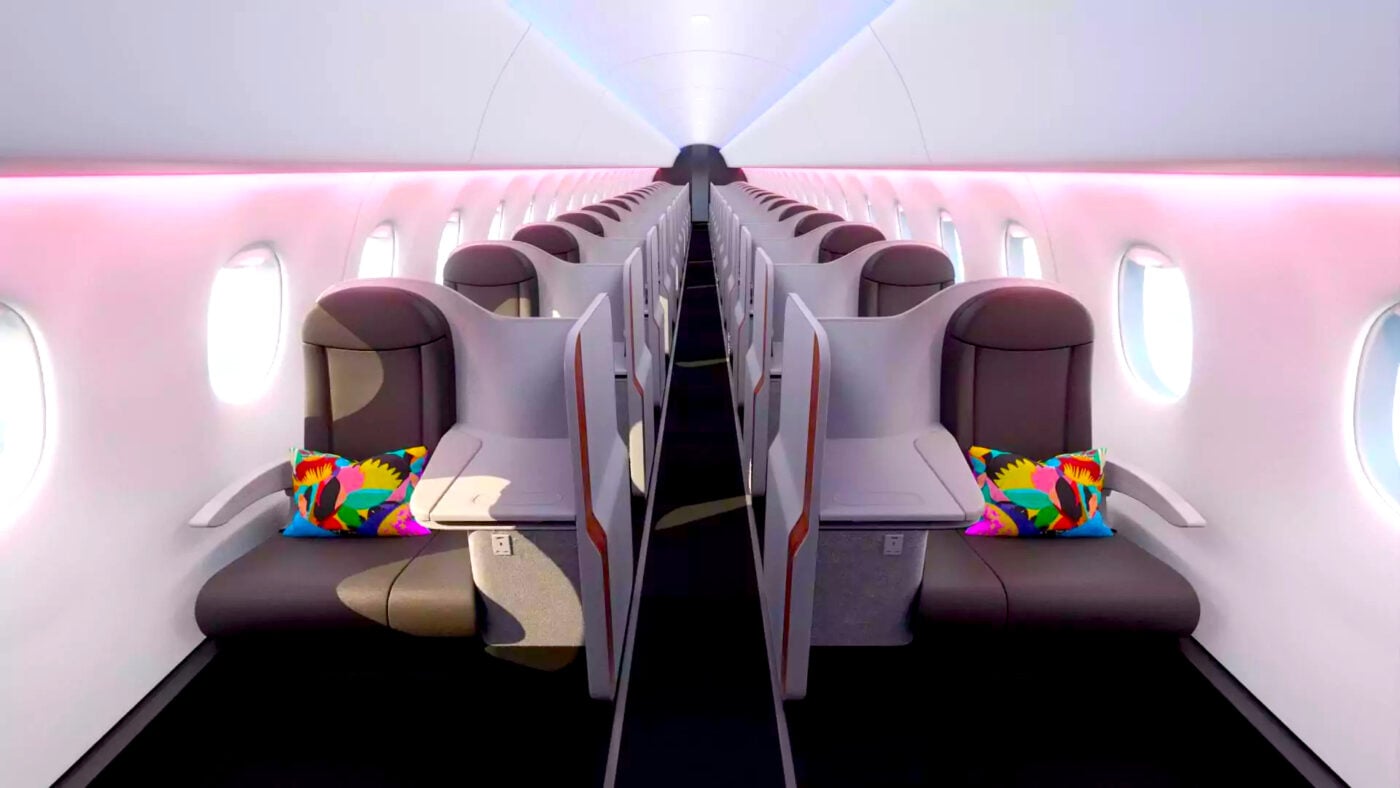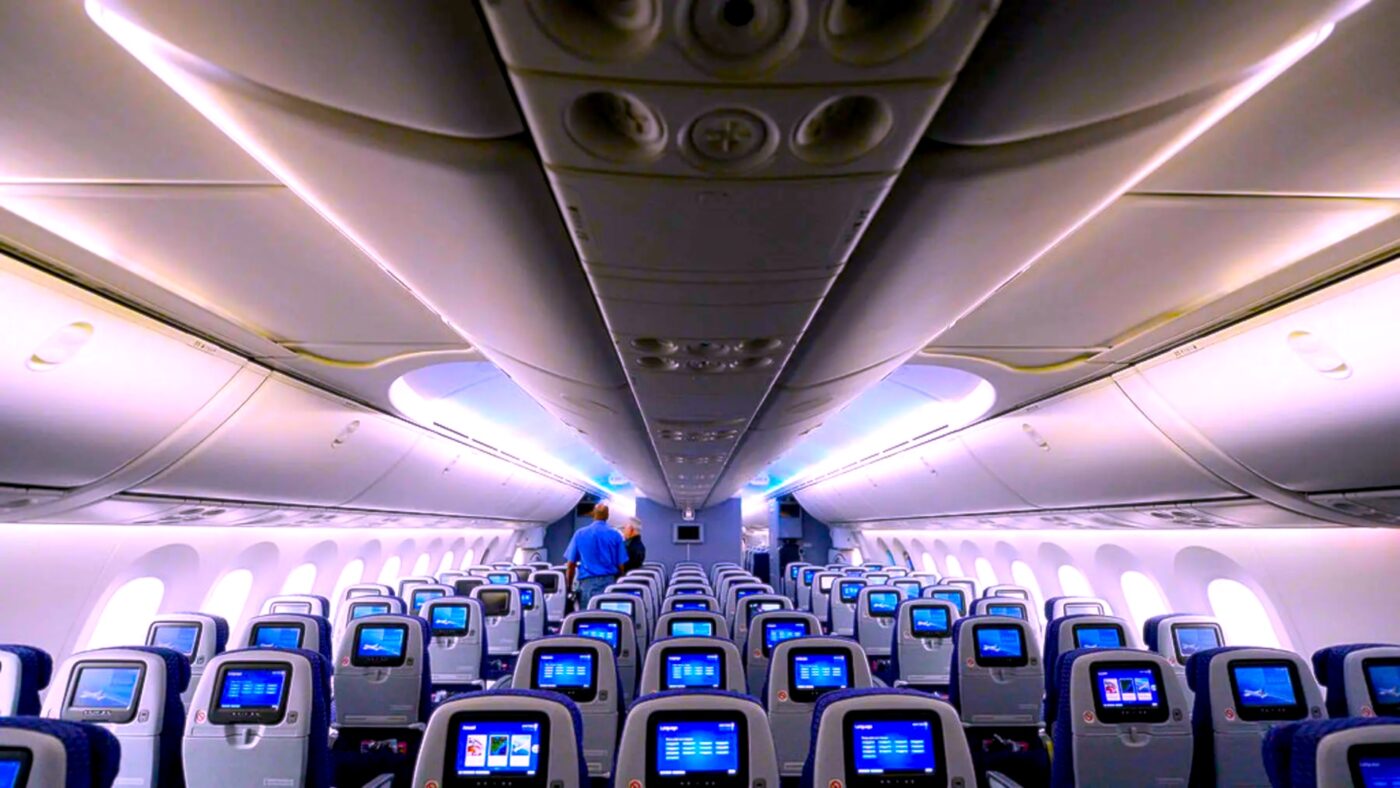Economy seats have never been as luxurious as their business class and first class counterparts, but now airlines are purposefully making economy cabins less comfortable as premium economy becomes the new ‘money-making machine’.
A few months ago, we reported on how premium economy cabins had been branded as the new “money-making machine” for airlines. Now, it seems that in an effort to maximise the profit potential of this innovative ‘in-between’ cabin class, airlines are actively making economy cabins less comfortable, less enjoyable, and worse value for their flyers.
How are they doing this? Via a process called ‘densification’ which — to cut a very long story short — is when airlines find ways to rearrange their cabins so that they can squeeze more passengers into the same amount of space and, almost without exception, charge the same amount of money or more for a smaller, less comfortable seat.
WATCH: These ‘double-decker’ concept plane seats show just how bad things could get.
Economy Shrinks As Business Class Booms
In a recent article published by Skift, Ajay Awtaney explains how not only are economy flyers getting a rough deal as their seat width and pitch appear to continually shrink — as confirmed by the number-crunchers over at Marketplace — but that airlines are actively making their first- and business-class offers more spacious and more luxurious at the same time that economy flyers are punished.
But why are they doing this, especially in an economic climate that sees your average flyer’s disposal income plummet and ticket prices rocket? It feels counterintuitive for airlines to throw money at a premium product when passengers are strapped for cash. However, as Awtaney neatly summarises, this may not necessarily be the case:
There are pockets of affluence where first class continues to do well, whatever shape the economy is in. And those airlines are investing in it.
Ajay Awtaney
In line with our unveiling that Australian first-class bookings are up 107% despite the cost of living crisis, it seems that those with money to spend have more disposable income to spend on luxury flights than ever before.
Premium Economy’s Gain Is Economy’s Loss
However, just because some people still have money to spend on first-class indulgence doesn’t necessarily mean that economy cabins would have to get worse. In fact, you might think that airlines would use the expansion and improvement of their luxury offer to market economy seats as better value than ever before, given just how unattainable the pointy end of the pane might feel for your average flyer.
And yet, what airlines seem to be doing instead — having recognised first and business classes still attract high-flyers and feel increasingly unattainable to others — is ploughing money into marketing premium economy seats as the new luxury-but-still-within-reach upgrade option for low- and middle-income travellers.

The sting in the tail here, however, is that in order to make premium economy seats — which usually distinguish themselves from economy by being slightly larger and slightly further apart, essentially everything that economy used to be — seem more appealing to customers is to actively make their economy offering less enticing.
How? By packing in more seats to the same amount of cabin space — ‘densification’. This way, premium economy and business class — the higher value tickets — become far more enticing than economy cabins which increasingly use 3:3:3 configurations, with some airlines looking to add another seat into every single row.
Why Flyers Should Not Stand For Densification
Not only does this mean that economy flyers will now be paying the same skyrocketing prices for economy seats as they’ve come to expect in recent years, but they’ll actually be getting worse value for their money. However, this isn’t the only reason why travellers should resist the rise of densification:
First, the recent appearance of ‘first-class only‘ and ‘all business-class‘ airlines proves that airlines are able to create a workable business model wherein flyers are given all the space and amenities you’d expect from a business class seat at a fraction of the business-class cost.
In the case of BermudAir, their prices don’t even represent a significant markup from economy seats with many carriers. So, if they’re able to provide and protect this level of comfort for flyers, why can’t commercial long-haul carriers?

Moreover, I have a niggling worry that airlines may use the ongoing climate crisis and their lacklustre efforts to go green as an excuse for rapid densification. In short, I think some airlines may try to defend their shrinking seats as an effort to get more flyers on board each plane and therefore reduce the carbon emissions they produce per journey.
However, this allows airlines far too easy an out: rather than downgrading customer experience as a quick-win for their carbon-cutting numbers, airlines need to invest their bumper profits in new, innovative technology that allows for increased quantity and quality of travel without causing environmental damage.
Repackaging current jets, especially in the name of making them less enjoyable — especially for those customers who are already likely to be enduring the very worst of a crunching economic climate — is not a sustainable way forward in any sense of the word.
